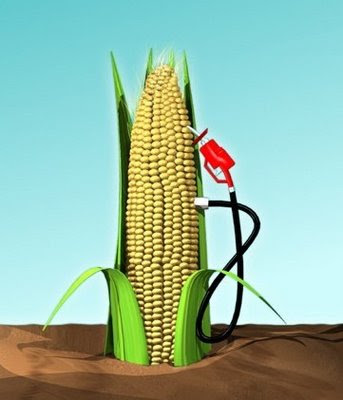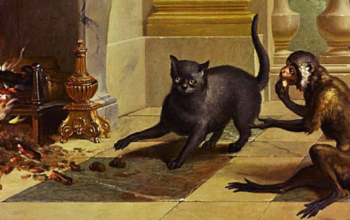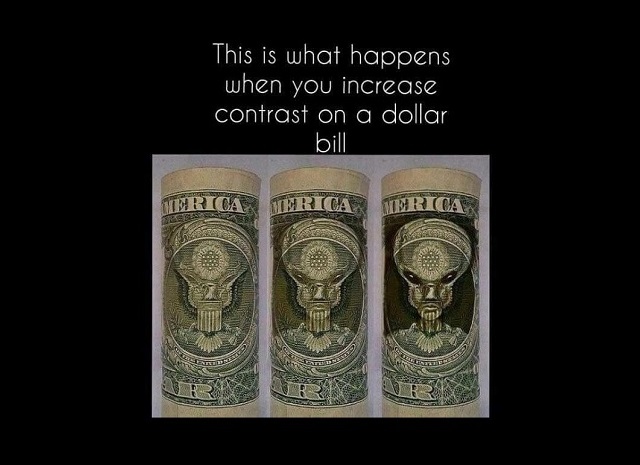
I believe that we are at a pivotal point in the country and the decision to use Corn Ethanol as an alternative fuel was wrong and is creating a problem worse than the original one. If we had not gone down the Corn Ethanol road, and expanded oil discovery and drilling in our own country, the cost of gas and food would be lower and the dollar would be much stronger. We would not be in this decaying economic mess that we are in now.
Instead as it stands now:
- The dollar continues to decline.
- The price of gas and food keeps going up.
- Congressional committees continue to hoodwink the American people by putting “Big Oil” executives on display in the hot seat when it suits them politically or financially.
- There are no new refineries being built.
- There is no drilling in Anwar or off our coasts.
Will America wake up before a corrupt Congress destroys this once Great Nation?
WHAT IS THE REAL COST OF CORN ETHANOL?
Corn is the most widely produced feed grain in the United States, accounting for more than 90 percent of total feed grain production. Around 80 million acres of land are planted to corn, with the majority of the crop grown in the Heartland region. Although most of the crop is used to feed livestock, corn is also processed into food and industrial products including starch, sweeteners, corn oil, beverage and industrial alcohol, and fuel ethanol. The United States is a major player in the world corn market. Approximately 20 percent of its corn crop is currently exported to other countries.
The United States Department of Agriculture (USDA) has announced American farmers are expected to get 55 percent more for a bushel of corn in the 2006/2007 growing season than they received in the 2005/2006 growing season. Average annual prices are expected to increase from $2.00 per bushel to about $3.10 per bushel.
Thanks to Federal mandates and subsidies, corn used for the production of corn ethanol is expected to increase from ~ 700 M Bushels in 2000/2001, to 3.2 B bushels in 2007/2008 – an increase of 357 percent. On December 11, 2006, the USDA estimated 2006-2007 U.S. ending stocks would be 935 million bushels, down from 1.97 billion bushels in 2005-2006. That decreases the ending stocks by more than 50 percent and puts the ending stocks to use ratio at 8%, – the lowest in 11 years. It should be obvious to all, we are going to need a lot more acreage and big yield improvements if corn production is going to keep up to demand. Prices could exceed $4.50 per Bu by the end of 2008. That’s a price increase of 125% over 2005/2006 season prices.
Score one for the agribusiness lobby.
Consumers Will Pay
Higher Food Prices
If corn prices increase by ~ 55 percent, year over year, then will the corn used for hog, cattle, chicken, turkey and fish feed go up 55 %? Doesn’t that increase the price of meat, poultry, fish, milk and eggs? If corn is used in corn meal, corn flakes, corn oil, and hundreds of other food items goes up 55%, doesn’t that increase the price of all these foods? Maybe. Since 2000, the price of beef is up 31%, eggs up 50%, corn sweeteners up 33%, wet corn milling up 39%, and corn flakes are up 10%. Chicken prices haven’t changed very much. Yet. Food producers are predicting higher prices.
The word on the street is that corn futures prices have risen because of the soaring demand for corn to produce corn ethanol. Iowa’s corn ethanol production is projected to exceed 3.6 billion gallons a year. At that rate, corn ethanol production would consume nearly 1.3 billion bushels of corn, or two thirds of the corn Iowa farmers harvested in 2006. Corn for July 2007 delivery, quoted on January 3, 2007, was $3.82 per bushel. That’s a ~ 60 percent increase over the average price for a bushel of corn from 1988 through 2006. But the net increase in the price of food is less than 60%. When processed into corn ethanol, a 56 pound bushel of corn can yield about 16 pounds of distillers grain, gluten meal, and corn oil, thus replacing some of the corn products lost to corn ethanol production. The inflationary impact of higher corn prices is also mitigated by the percentage of corn used in each item of food. The greater the percentage of corn used in the ingredients, the higher the final price paid by a consumer. Final consumer prices will also be driven by the impact of export demand, the efficiency of cultivation (including the use of fertilizers, herbicides, and insecticides), the increasing use of lower yield marginal land for corn production, corn belt weather, consumer demand, and the greed (or fear) of Futures Market speculators.
Corn prices don’t move in a vacuum. As the price of corn increases, there is a corresponding upward pressure on the price paid for other grains, such as rice and wheat. Poor growing conditions in Europe, the United States, the Ukraine, and Australia; along with low stocks of stored wheat; and an increase in production of biofuels; have combined to push international wheat prices up to levels not seen in 10 years. We can expect the price of bread, pasta, and cereals to increase in 2007.
If corn prices follow the upward trend in demand,
will the price of food double by the end of 2008?
Probably not. But food prices are headed UP. Families will be forced to spend a greater percentage of their budgets on groceries. Low income families face the specter of possible nutritional deficiency.
Related:
Corn Prices Jump to Record $6 a Bushel, Driving Up Costs for Food
200 Billion Barrels Of Oil That Could Make The U.S. Energy Independent
Democrats Put Big Oil on Display Once Again


